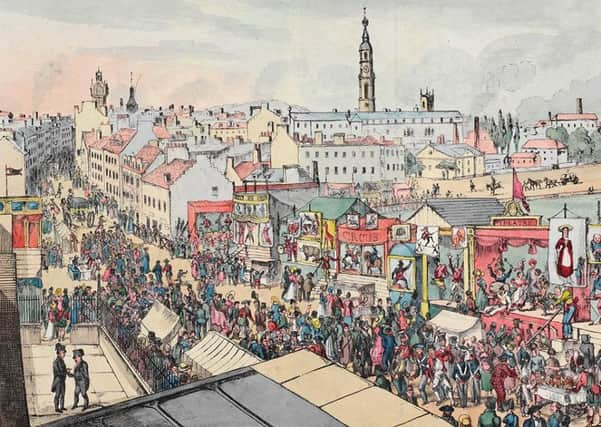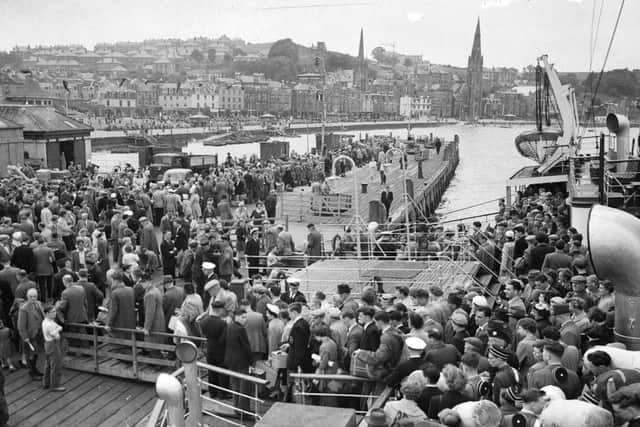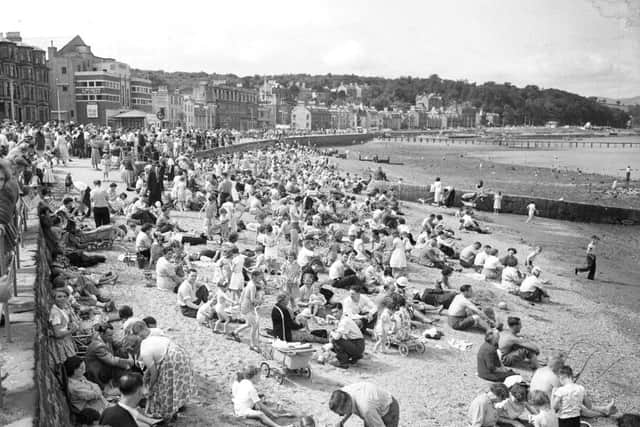When they tried to ban the raucous Glasgow Fair


This Friday marks the start of the Glasgow Fair - traditionally the July fortnight when normal business was suspended across the city.
But such was the tone of the holiday during the mid-19th Century, calls were made to ban the break - or at least the shows which took root on Glasgow Green for its duration.
Advertisement
Hide AdAdvertisement
Hide AdThe Magdalene Institution of Glasgow, which reformed prostitutes and other ‘fallen women’, campaigned for its abolition in the mid 1800s due its so-called corrupting influence.


Newspapers also took a rather snobbish stance on the gatherings on the green.
It was here that hundreds of booths housing entertainers and a myriad of travelling show people sprung up for the fortnight - as well as “rascal” elements of the city.
During the 1840s, typical acts included the Bosjesmans, described in reports as “strange little folk from the remote wilds of Africa” who were hailed as one of the “greatest attractions of the fair,” according to newspaper reports.


Advertisement
Hide AdAdvertisement
Hide AdAnother star draw was a “great fat man” called Goliah who had too many fingers and toes, a mummy from the island of Ichaboe, the skeleton of an immense whale and a celebrated Welsh teenager called Thomas Jones.
“His principle merit lies in his body being partly covered with scales like the armadillo,” a report in the Glasgow Herald said.
In 1847, the newspaper took a dim view of the quality of attractions on offer, describing them “as the “most contemptible kind.”
It described the majority of booths being occupied by “some hundreds of stout people” who served up penny drama of “sufficient grossness”.


Advertisement
Hide AdAdvertisement
Hide AdFurther than that, the newspaper was clear in its view of some who attended the fair.
The newspaper described once audience as including “barefooted match sellers and stair sleepers of the city....and the artful dodgers, the thieves, loose women and dangerous scum of Glasgow some five years hence.”
It added: “A vast number of these young gentry hold between their teeth a black short tobacco pie and pull away at it is as conscientiously as though the weed was meat and drink to them.”
They drank their liquor with “the gusto of an Indian when he swallows his fire water and wishes his throat a mile long that he might taste it the whole way down.”


Advertisement
Hide AdAdvertisement
Hide AdAll this came amid the “awful” smell of tobacco, lucifers, brimstone spunks (an old term for sulphur matches) and dried fish, the paper recorded.
It added: “Seriously speaking, we hope that our operative fellow citizens, who for a brief season are let loose from toil, will show a worthy sense for their own elevation and comfort, by resorting mainly for the recreation to the green fields and the coast.
“They are invited to the Botanic Gardens. There is a splendid horticultural show in George Square and by rail and steam, not only the whole of the west coast, but a large section of Scotland, is open to the public for a trifle.”
The Teetotal Society were among those offering good value trips out of the city.
Advertisement
Hide AdAdvertisement
Hide AdIn 1864, the Magdalane Institute of Glasgow met with the Provost and magistrates of the city to push abolition of the Glasgow Fair, or at least the shows on the green.
Together, the two had multiplied the “incentives of evil and the victims of crime,” according its annual report the following year.
The mix of people from the country with those of the city had a damaging effect, the institute said.
“It has subjected the youth of the country to corrupting influences and increased the demoralisation of the city,” the institute claimed.
Advertisement
Hide AdAdvertisement
Hide AdIt added that, while the Glasgow Fair was first observed in the 12th Century, there was nothing to connect the event with the showground which aided “degrading excesses” and offered “debasing exhibitions.”
Leaving Glasgow during the holiday did become increasingly popularwith a trip “doon the watter” of the Clyde coast becoming synonymous with the Glasgow Fair.
On the first Saturday of the fair in 1855, a total of 41 steamers left the Broomielaw with an estimated 14,350 people leaving the city via the Clyde alone.
A further 26,000 people took a train out of Glasgow that day although many thousands more came in from towns such as Barrhead and Hamilton to go to the green.
Advertisement
Hide AdAdvertisement
Hide AdA report in the Paisley Herald and Renfrewshire Advertiser said that thousands of working people “let loose from toil” were generally well behaved and orderly.
It added; “Every large city, however, is polluted by the presence of a number of degraded beings, who will get drunk whenever liquor is to be had, although they should perish in the drinking of it.
“As the night wore on, these pitiful creatures were lying scattered here and there along the streets, some on their back and some on their belly, and not a few bleeding profusely from gashes in the head which they had received in the course of successive conflicts with the granite pavement.”
Eventually, in 1871, The Glasgow Fair shows were moved from Glasgow Green to a patch of land at Crown Point, near where the Forge Shopping Centre stands today.
Advertisement
Hide AdAdvertisement
Hide AdIt added; “If any hoped for that the removal of the shows from the position they so long occupied would lead to their abolition, these hopes have assuredly been disappointed, but the effect of the change cannot fail to be beneficial.
“It leaves the Green to be devoted to its legitimate purpose without exposing visitors to the pernicious influence of the shows, and to contact with the concentrated rascality of the city.”
